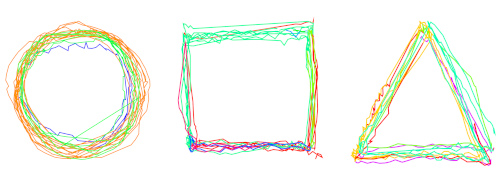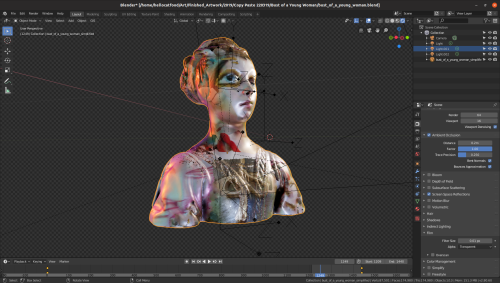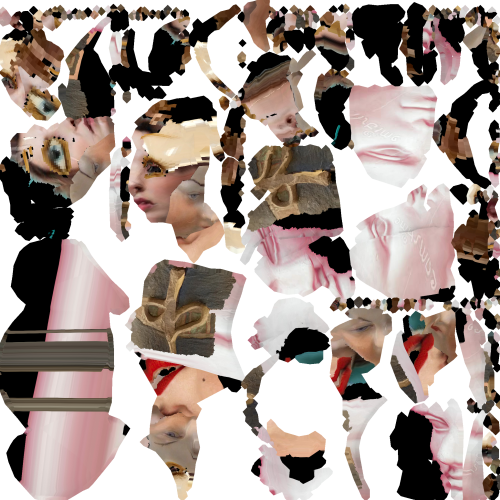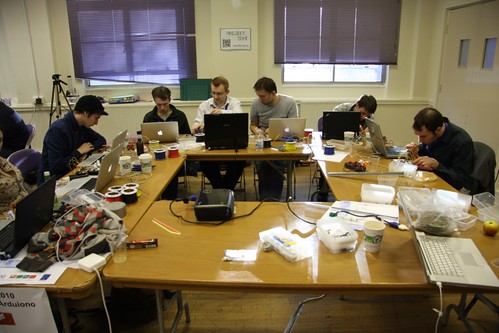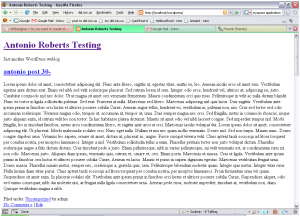For the AlgoMech 2019 festival in June I created a new performative drawing piece, A Perfect Circle. The piece is about how we interface with computers that analyse our activities. It consists of a video and accompanying plotter drawings.
Making A Perfect Circle presented me with a few challenges. The make the video element I hacked together a couple of Processing scripts that did basic motion tracking by following a user-specified colour. It would draw these lines, creating new lines (instead of adding to an existing line) at each major turn and giving them a unique colour.
The next stage was to export those drawn lines to SVGs (or PDFs) so that I could export them to Inkscape and then a plotter. Fortunately Processing already has functions for exporting to SVGs. Unfortunately for me if I were to implement this as is suggested in the help file it would export both the drawn line and the background video as a still frame. I produced a very hacky workaround (with help from Ben Neal) which “works” but produces a few unwanted artefacts.
Before I go on I should probably explain what a plotter is as the unwanted artefacts relate to it. For this I will copy from the Wikipedia article on plotters:
The plotter is a computer printer for printing vector graphics. Plotters draw pictures on paper using a pen. In the past, plotters were used in applications such as computer-aided design, as they were able to produce line drawings much faster and of a higher quality than contemporary conventional printers, and small desktop plotters were often used for business graphics.
At home I have a Silhouette Cameo 2 vinyl cutter. When using this great Inkscape plugin I can bypass Silhouette’s proprietary software and send artwork directly to the cutter from Inkscape. Thanks to a pen holder adaptor I can replace the vinyl cutting blades with a pen and turn the vinyl cutter into a plotter 🙂
Back to the Processing sketch. The hacky code that I made produced the desired lines but also it had lots of additional single-node paths/dots at the start of each line.
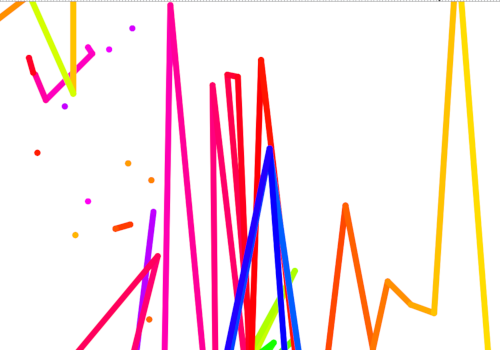
Removing these wouldn’t be very easy. Using Edit > Select Same > Fill and Stroke or Fill Color or any of the other options wouldn’t work as it would also end up selecting the lines. I then had the bright idea to select objects based on their size. All of the dots had a dimension of 4.057×4.000px, so in theory there would be an option like Edit > Select Same > Size. However, this is not so.
After a discussion on the Inkscape forum I opened a feature request on the Inkscape bug tracker to select objects of similar size. One thing I added to this was the idea of a threshold. Using this you could select objects that were within n% of the size of the selected object. If you’ve ever used GIMP you would have seen a similar function in its fuzzy selection tool This could definitely be useful if you trace bitmaps and it produces a lot of speckles. I also added a mockup to show how it could be applied to other options in the Edit > Select Same menu options.
Anyway, at the moment this exists as a feature request. I think Inkscape is concentrating on delivering version 1.0 of the software so I don’t expect to see this implemented any time soon. As with anything in the land of open source, if you’ve got the skills to do this please contribute!
In the end I used fablabnbg’s Inkscape extension to chain all (or most) of the paths into one big path. This made selecting the dots easier as I could just hide the big path(s) once they were chained together.
After that it was a simple case of sending it to the plotter!

